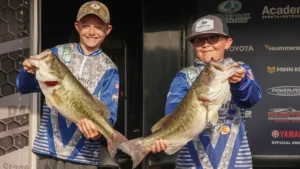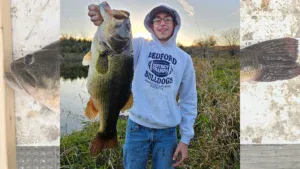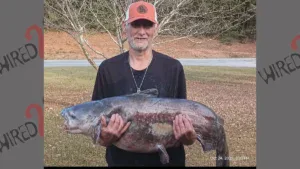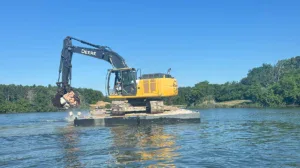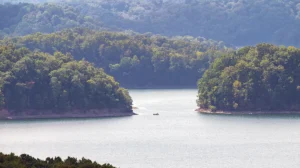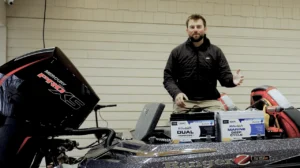Lin Burnett dreams of a day when Arkansas consistently produces trophy largemouth bass.
Burnett, who describes himself as a bass fanatic, has spent 25 years targeting the state’s biggest fish. But at no time has he been more encouraged about the future as he is now.
In recent years, the Arkansas Game and Fish Commission (AGFC) has stepped up efforts to manage trophy largemouth, stocking Florida bass – a strain that can grow to 10 pounds and larger – in parts of the state that have the warm water the fish require.
But that’s only the start. Starting Jan. 1, 2026, the AGFC will launch its Legacy Lunker Program, dedicated to enhancing Arkansas’ trophy bass population and recognizing the anglers who catch those giant fish. Burnett, an oral surgeon from Little Rock, has already gotten a glimpse of how the program will work.
Fishing on Lake Hamilton last December, he caught a bass weighing 11.14 pounds on a Chatterbait along a shallow weed line. He donated his catch to the AGFC, and fisheries biologists used the fish for a test run of its new program.
Burnett’s fish was picked up at the ramp that day, and it was transported to the Joe Hogan Hatchery in central Arkansas. There, it was pampered and treated like a celebrity until it was time to spawn. Then it was matched with a male of similarly good genetics and the couple pulled off a good spawn in a controlled setting.
When the fry grew to fingerling size, they were stocked back into Hamilton. Later, Burnett got to release the big female at the same exact spot where he caught it months earlier.
“It was exciting to be a part of this,” Burnett told Wired2Fish. “Game and Fish started stocking Florida bass at Hamilton about seven or eight years ago, and you can see the difference. Hamilton used to be a good-numbers-but-small fish lake, but the number of double-digit bass we’re seeing now is absolutely stunning. This program should help even more.”
The Arkansas Legacy Lunker program is patterned after Texas’ highly successful Toyota ShareLunker program. In fact, Arkansas fisheries officials relied heavily on advice from the Texas biologists who run the program.

Here’s how it will work in Arkansas:
- Bass of 10 pounds-plus that are caught from Jan. 1 to the end of March can be donated alive to the AGFC for use in the program.
- Those females will be matched with males that also have trophy-fish genetics. The Red Hills Hatchery in Georgia will help determine which males are suited for spawning.
- Spawning in a controlled setting produces many more fry than in the wild, providing biologists with a good stocking base.
- Fingerlings, plus the large females, will be returned to the waters where they were caught.
- Fishermen who catch trophy bass outside of the donation period will be recognized and receive a prize pack from sponsors. Categories include anglers who catch a bass 8 pounds and bigger, a youth who lands one over 6 pounds, and anyone who catches a smallmouth or spotted bass 4 pounds or bigger.
Jeremy Risley, black bass program coordinator for the AGFC, expects most of the entries to come from waters in the bottom two-thirds of the state. That’s where the state agency has stocked most of the Florida largemouth bass, which grow to larger sizes than the northern strain.
Florida bass thrive in warmer climes with good aquatic vegetation. Lakes such as Hamilton, Millwood, Ouachita and DeGray are already producing impressive catches. Arkansas officials hope to improve Arkansas’ overall bass population through the program by collecting data such as genetic information to guide management strategies. Burnett and many other Arkansas bass fishermen are on-board with the program.
“Fishermen here are ready for a change,” he said. “We’re tired of weighing in 10-pound bags (for 5 bass) to win a tournament.”
Arkansas companies such as Xpress Boats, PRADCO and Harper’s Pure Country Taxidermy, in addition to retail giant Bass Pro Shops, also are excited about the program.
“This program isn’t just about big fish. It’s about building a legacy for future generations of anglers,” said Rory Herndon, president of Xpress Boats, which will present a fully-rigged bass boat to one of the donors. “We’re proud to stand beside AGFC in making Arkansas among the top destinations for trophy bass fishing.”
Arkansas’ state-record largemouth bass weighed 16 pounds, 4 ounces, caught in 1976 at Mallard Lake. Whether that mark will ever be eclipsed is anyone’s guess. But Risley hopes that the new Legacy Lunker Program will result in more 10-pound-plus bass caught in Arkansas.
“We’ll never be Texas, which has a lot of good trophy-bass water,” Risley said. “But we hope we can improve what we have and even expand it. We’ve worked on this for the last year and a half and I had to keep it secret. I’m excited now that I can talk about it.”



